| General information |
| Product type designation |
CPU 1511-1 PN |
| HW functional status |
FS01 |
| Firmware version |
V2.6 |
| Product function |
| ● I&M data |
Yes; I&M0 to I&M3 |
| Engineering with |
| ● STEP 7 TIA Portal configurable/integrated as of version |
V15.1 (FW V2.6) / V15 (FW V2.5) or higher; with older TIA Portal versions configurable as 6ES7511-1AK01-0AB0 |
| Configuration control |
| via dataset |
Yes |
| Display |
| Screen diagonal [cm] |
3.45 cm |
| Control elements |
| Number of keys |
8 |
| Mode buttons |
2 |
| Supply voltage |
| Type of supply voltage |
24 V DC |
| permissible range, lower limit (DC) |
19.2 V |
| permissible range, upper limit (DC) |
28.8 V |
| Reverse polarity protection |
Yes |
| Mains buffering |
| ● Mains/voltage failure stored energy time |
5 ms |
| ● Repeat rate, min. |
1/s |
| Input current |
| Current consumption (rated value) |
0.7 A |
| Current consumption, max. |
0.95 A |
| Inrush current, max. |
1.9 A; Rated value |
| I²t |
0.02 A²·s |
| Power |
| Infeed power to the backplane bus |
10 W |
| Power consumption from the backplane bus (balanced) |
5.5 W |
| Power loss |
| Power loss, typ. |
5.7 W |
| Memory |
| Number of slots for SIMATIC memory card |
1 |
| SIMATIC memory card required |
Yes |
| Work memory |
| ● integrated (for program) |
150 kbyte |
| ● integrated (for data) |
1 Mbyte |
| Load memory |
| ● Plug-in (SIMATIC Memory Card), max. |
32 Gbyte |
| Backup |
| ● maintenance-free |
Yes |
| CPU processing times |
| for bit operations, typ. |
60 ns |
| for word operations, typ. |
72 ns |
| for fixed point arithmetic, typ. |
96 ns |
| for floating point arithmetic, typ. |
384 ns |
| CPU-blocks |
| Number of elements (total) |
2 000; Blocks (OB, FB, FC, DB) and UDTs |
| DB |
| ● Number range |
1 ... 60 999; subdivided into: number range that can be used by the user: 1 ... 59 999, and number range of DBs created via SFC 86: 60 000 ... 60 999 |
| ● Size, max. |
1 Mbyte; For DBs with absolute addressing, the max. size is 64 KB |
| FB |
| ● Number range |
0 ... 65 535 |
| ● Size, max. |
150 kbyte |
| FC |
| ● Number range |
0 ... 65 535 |
| ● Size, max. |
150 kbyte |
| OB |
| ● Size, max. |
150 kbyte |
| ● Number of free cycle OBs |
100 |
| ● Number of time alarm OBs |
20 |
| ● Number of delay alarm OBs |
20 |
| ● Number of cyclic interrupt OBs |
20; With minimum OB 3x cycle of 500 µs |
| ● Number of process alarm OBs |
50 |
| ● Number of DPV1 alarm OBs |
3 |
| ● Number of isochronous mode OBs |
2 |
| ● Number of technology synchronous alarm OBs |
2 |
| ● Number of startup OBs |
100 |
| ● Number of asynchronous error OBs |
4 |
| ● Number of synchronous error OBs |
2 |
| ● Number of diagnostic alarm OBs |
1 |
| Nesting depth |
| ● per priority class |
24 |
| Counters, timers and their retentivity |
| S7 counter |
| ● Number |
2 048 |
| Retentivity |
| — adjustable |
Yes |
| IEC counter |
| ● Number |
Any (only limited by the main memory) |
| Retentivity |
| — adjustable |
Yes |
| S7 times |
| ● Number |
2 048 |
| Retentivity |
| — adjustable |
Yes |
| IEC timer |
| ● Number |
Any (only limited by the main memory) |
| Retentivity |
| — adjustable |
Yes |
| Data areas and their retentivity |
| Retentive data area (incl. timers, counters, flags), max. |
128 kbyte; In total; available retentive memory for bit memories, timers, counters, DBs, and technology data (axes): 88 KB |
| Extended retentive data area (incl. timers, counters, flags), max. |
1 Mbyte; When using PS 6 0W 24/48/60 V DC HF |
| Flag |
| ● Number, max. |
16 kbyte |
| ● Number of clock memories |
8; 8 clock memory bit, grouped into one clock memory byte |
| Data blocks |
| ● Retentivity adjustable |
Yes |
| ● Retentivity preset |
No |
| Local data |
| ● per priority class, max. |
64 kbyte; max. 16 KB per block |
| Address area |
| Number of IO modules |
1 024; max. number of modules / submodules |
| I/O address area |
| ● Inputs |
32 kbyte; All inputs are in the process image |
| ● Outputs |
32 kbyte; All outputs are in the process image |
| per integrated IO subsystem |
| — Inputs (volume) |
8 kbyte |
| — Outputs (volume) |
8 kbyte |
| per CM/CP |
| — Inputs (volume) |
8 kbyte |
| — Outputs (volume) |
8 kbyte |
| Subprocess images |
| ● Number of subprocess images, max. |
32 |
| Hardware configuration |
| Number of distributed IO systems |
32; A distributed I/O system is characterized not only by the integration of distributed I/O via PROFINET or PROFIBUS communication modules, but also by the connection of I/O via AS-i master modules or links (e.g. IE/PB-Link) |
| Number of DP masters |
| ● Via CM |
4; A maximum of 4 CMs/CPs (PROFIBUS, PROFINET, Ethernet) can be inserted in total |
| Number of IO Controllers |
| ● integrated |
1 |
| ● Via CM |
4; A maximum of 4 CMs/CPs (PROFIBUS, PROFINET, Ethernet) can be inserted in total |
| Rack |
| ● Modules per rack, max. |
32; CPU + 31 modules |
| ● Number of lines, max. |
1 |
| PtP CM |
| ● Number of PtP CMs |
the number of connectable PtP CMs is only limited by the number of available slots |
| Time of day |
| Clock |
| ● Type |
Hardware clock |
| ● Backup time |
6 wk; At 40 °C ambient temperature, typically |
| ● Deviation per day, max. |
10 s; Typ.: 2 s |
| Operating hours counter |
| ● Number |
16 |
| Clock synchronization |
| ● supported |
Yes |
| ● in AS, master |
Yes |
| ● in AS, slave |
Yes |
| ● on Ethernet via NTP |
Yes |
| Interfaces |
| Number of PROFINET interfaces |
1 |
| 1. Interface |
| Interface types |
| ● Number of ports |
2 |
| ● integrated switch |
Yes |
| ● RJ 45 (Ethernet) |
Yes; X1 |
| Protocols |
| ● IP protocol |
Yes; IPv4 |
| ● PROFINET IO Controller |
Yes |
| ● PROFINET IO Device |
Yes |
| ● SIMATIC communication |
Yes |
| ● Open IE communication |
Yes |
| ● Web server |
Yes |
| ● Media redundancy |
Yes; MRP Automanager according to IEC 62439-2 Edition 2.0 |
| PROFINET IO Controller |
| Services |
| — PG/OP communication |
Yes |
| — S7 routing |
Yes |
| — Isochronous mode |
Yes |
| — Open IE communication |
Yes |
| — IRT |
Yes |
| — MRP |
Yes; As MRP redundancy manager and/or MRP client; max. number of devices in the ring: 50 |
| — MRPD |
Yes; Requirement: IRT |
| — PROFIenergy |
Yes |
| — Prioritized startup |
Yes; Max. 32 PROFINET devices |
| — Number of connectable IO Devices, max. |
128; In total, up to 256 distributed I/O devices can be connected via AS-i, PROFIBUS or PROFINET |
| — Of which IO devices with IRT, max. |
64 |
| — Number of connectable IO Devices for RT, max. |
128 |
| — of which in line, max. |
128 |
| — Number of IO Devices that can be simultaneously activated/deactivated, max. |
8; in total across all interfaces |
| — Number of IO Devices per tool, max. |
8 |
| — Updating times |
The minimum value of the update time also depends on communication share set for PROFINET IO, on the number of IO devices, and on the quantity of configured user data |
| Update time for IRT |
| — for send cycle of 250 µs |
250 μs to 4 ms; Note: In the case of IRT with isochronous mode, the minimum update time of 625 µs of the isochronous OB is decisive |
| — for send cycle of 500 µs |
500 μs to 8 ms; Note: In the case of IRT with isochronous mode, the minimum update time of 625 µs of the isochronous OB is decisive |
| — for send cycle of 1 ms |
1 ms to 16 ms |
| — for send cycle of 2 ms |
2 ms to 32 ms |
| — for send cycle of 4 ms |
4 ms to 64 ms |
| — With IRT and parameterization of "odd" send cycles |
Update time = set "odd" send clock (any multiple of 125 µs: 375 µs, 625 µs ... 3 875 µs) |
| Update time for RT |
| — for send cycle of 250 µs |
250 µs to 128 ms |
| — for send cycle of 500 µs |
500 µs to 256 ms |
| — for send cycle of 1 ms |
1 ms to 512 ms |
| — for send cycle of 2 ms |
2 ms to 512 ms |
| — for send cycle of 4 ms |
4 ms to 512 ms |
| PROFINET IO Device |
| Services |
| — PG/OP communication |
Yes |
| — S7 routing |
Yes |
| — Isochronous mode |
No |
| — Open IE communication |
Yes |
| — IRT |
Yes |
| — MRP |
Yes; As MRP redundancy manager and/or MRP client; max. number of devices in the ring: 50 |
| — MRPD |
Yes; Requirement: IRT |
| — PROFIenergy |
Yes |
| — Shared device |
Yes |
| — Number of IO Controllers with shared device, max. |
4 |
| — Asset management record |
Yes; Per user program |
| Interface types |
| RJ 45 (Ethernet) |
| ● 100 Mbps |
Yes |
| ● Autonegotiation |
Yes |
| ● Autocrossing |
Yes |
| ● Industrial Ethernet status LED |
Yes |
| Protocols |
| Number of connections |
| ● Number of connections, max. |
96; via integrated interfaces of the CPU and connected CPs / CMs |
| ● Number of connections reserved for ES/HMI/web |
10 |
| ● Number of connections via integrated interfaces |
64 |
| ● Number of S7 routing paths |
16 |
| Redundancy mode |
| ● H-Sync forwarding |
Yes |
| SIMATIC communication |
| ● S7 communication, as server |
Yes |
| ● S7 communication, as client |
Yes |
| ● User data per job, max. |
See online help (S7 communication, user data size) |
| Open IE communication |
| ● TCP/IP |
Yes |
| — Data length, max. |
64 kbyte |
| — several passive connections per port, supported |
Yes |
| ● ISO-on-TCP (RFC1006) |
Yes |
| — Data length, max. |
64 kbyte |
| ● UDP |
Yes |
| — Data length, max. |
2 kbyte; 1 472 bytes for UDP broadcast |
| — UDP multicast |
Yes; Max. 5 multicast circuits |
| ● DHCP |
No |
| ● SNMP |
Yes |
| ● DCP |
Yes |
| ● LLDP |
Yes |
| Web server |
| ● HTTP |
Yes; Standard and user pages |
| ● HTTPS |
Yes; Standard and user pages |
| OPC UA |
| ● Runtime license required |
Yes |
| ● OPC UA client |
Yes |
| — Application authentication |
Yes |
| — Security policies |
Available security policies: None, Basic128Rsa15, Basic256Rsa15, Basic256Sha256 |
| — User authentication |
"anonymous" or by user name & password |
| — Number of connections, max. |
4 |
| — Number of nodes of the client interfaces, max. |
1 000 |
| — Number of elements for one call of OPC_UA_NodeGetHandleList/OPC_UA_ReadList/OPC_UA_WriteList, max. |
300 |
| — Number of elements for one call of OPC_UA_NameSpaceGetIndexList, max. |
20 |
| — Number of elements for one call of OPC_UA_MethodGetHandleList, max. |
100 |
| — Number of simultaneous calls of the client instructions per connection (except OPC_UA_ReadList,OPC_UA_WriteList,OPC_UA_MethodCall), max. |
1 |
| — Number of simultaneous calls of the client instructions OPC_UA_ReadList,OPC_UA_WriteList and OPC_UA_MethodCall, max. |
5 |
| — Number of registerable nodes, max. |
5 000 |
| — Number of registerable method calls of OPC_UA_MethodCall, max. |
100 |
| — Number of inputs/outputs when calling OPC_UA_MethodCall, max. |
20 |
| ● OPC UA server |
Yes; Data access (read, write, subscribe), method call, custom address space |
| — Application authentication |
Yes |
| — Security policies |
Available security policies: None, Basic128Rsa15, Basic256Rsa15, Basic256Sha256 |
| — User authentication |
"anonymous" or by user name & password |
| — Number of sessions, max. |
32 |
| — Number of accessible variables, max. |
50 000 |
| — Number of registerable nodes, max. |
10 000 |
| — Number of subscriptions per session, max. |
20 |
| — Sampling time, min. |
100 ms |
| — Send time, min. |
500 ms |
| — Number of server methods, max. |
20 |
| — Number of inputs/outputs per server method, max. |
20 |
| — Number of monitored items, max. |
1 000; For 1 s sampling interval and 1 s send interval |
| — Number of server interfaces, max. |
10 |
| — Number of nodes for user-defined server interfaces, max. |
1 000 |
| Further protocols |
| ● MODBUS |
Yes; MODBUS TCP |
| Media redundancy |
| ● Switchover time on line break, typ. |
200 ms; For MRP, bumpless for MRPD |
| ● Number of stations in the ring, max. |
50 |
| Isochronous mode |
| Isochronous operation (application synchronized up to terminal) |
Yes; Distributed and central; with minimum OB 6x cycle of 625 µs (distributed) and 1 ms (central) |
| Equidistance |
Yes |
| S7 message functions |
| Number of login stations for message functions, max. |
32 |
| Program alarms |
Yes |
| Number of configurable program messages, max. |
5 000; Program messages are generated by the "Program_Alarm" block, ProDiag or GRAPH |
| Number of loadable program messages in RUN, max. |
2 500 |
| Number of simultaneously active program alarms |
|
| ● Number of program alarms |
300 |
| ● Number of alarms for system diagnostics |
100 |
| ● Number of alarms for motion technology objects |
80 |
| Test commissioning functions |
| Joint commission (Team Engineering) |
Yes; Parallel online access possible for up to 5 engineering systems |
| Status block |
Yes; Up to 8 simultaneously (in total across all ES clients) |
| Single step |
No |
| Number of breakpoints |
8 |
| Status/control |
| ● Status/control variable |
Yes |
| ● Variables |
Inputs/outputs, memory bits, DBs, distributed I/Os, timers, counters |
| ● Number of variables, max. |
|
| — of which status variables, max. |
200; per job |
| — of which control variables, max. |
200; per job |
| Forcing |
| ● Forcing, variables |
Peripheral inputs/outputs |
| ● Number of variables, max. |
200 |
| Diagnostic buffer |
| ● present |
Yes |
| ● Number of entries, max. |
1 000 |
| — of which powerfail-proof |
500 |
| Traces |
| ● Number of configurable Traces |
4; Up to 512 KB of data per trace are possible |
| Interrupts/diagnostics/status information |
| Diagnostics indication LED |
| ● RUN/STOP LED |
Yes |
| ● ERROR LED |
Yes |
| ● MAINT LED |
Yes |
| ● STOP ACTIVE LED |
Yes |
| ● Connection display LINK TX/RX |
Yes |
| Supported technology objects |
| Motion Control |
Yes; Note: The number of axes affects the cycle time of the PLC program; selection guide via the TIA Selection Tool or SIZER |
| ● Number of available Motion Control resources for technology objects (except cam disks) |
800 |
| ● Required Motion Control resources |
|
| — per speed-controlled axis |
40 |
| — per positioning axis |
80 |
| — per synchronous axis |
160 |
| — per external encoder |
80 |
| — per output cam |
20 |
| — per cam track |
160 |
| — per probe |
40 |
| ● Positioning axis |
|
| — Number of positioning axes at motion control cycle of 4 ms (typical value) |
5 |
| — Number of positioning axes at motion control cycle of 8 ms (typical value) |
10 |
| Controller |
|
| ● PID_Compact |
Yes; Universal PID controller with integrated optimization |
| ● PID_3Step |
Yes; PID controller with integrated optimization for valves |
| ● PID-Temp |
Yes; PID controller with integrated optimization for temperature |
| Counting and measuring |
|
| ● High-speed counter |
Yes |
| Ambient conditions |
| Ambient temperature during operation |
| ● horizontal installation, min. |
0 °C |
| ● horizontal installation, max. |
60 °C; Display: 50 °C, at an operating temperature of typically 50 °C, the display is switched off |
| ● vertical installation, min. |
0 °C |
| ● vertical installation, max. |
40 °C; Display: 40 °C, at an operating temperature of typically 40 °C, the display is switched off |
| Ambient temperature during storage/transportation |
| ● min. |
-40 °C |
| ● max. |
70 °C |
| Configuration |
| Programming |
| Programming language |
| — LAD |
Yes |
| — FBD |
Yes |
| — STL |
Yes |
| — SCL |
Yes |
| — GRAPH |
Yes |
| Know-how protection |
| ● User program protection/password protection |
Yes |
| ● Copy protection |
Yes |
| ● Block protection |
Yes |
| Access protection |
| ● Password for display |
Yes |
| ● Protection level: Write protection |
Yes |
| ● Protection level: Read/write protection |
Yes |
| ● Protection level: Complete protection |
Yes |
| Cycle time monitoring |
| ● lower limit |
adjustable minimum cycle time |
| ● upper limit |
adjustable maximum cycle time |
| Dimensions |
| Width |
35 mm |
| Height |
147 mm |
| Depth |
129 mm |
| Weights |
| Weight, approx. |
405 g |
| last modified: |
01/31/2019 |



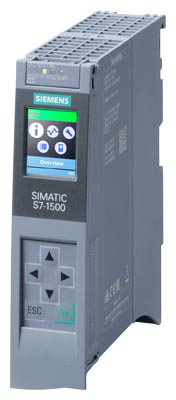
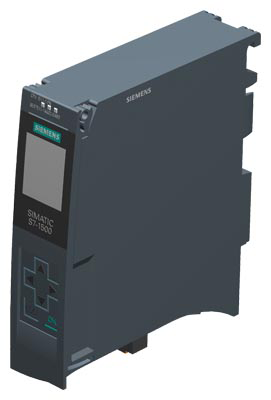

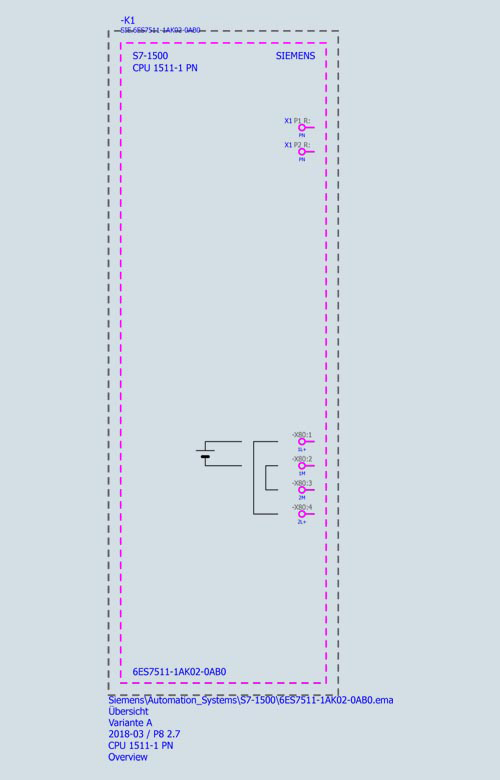
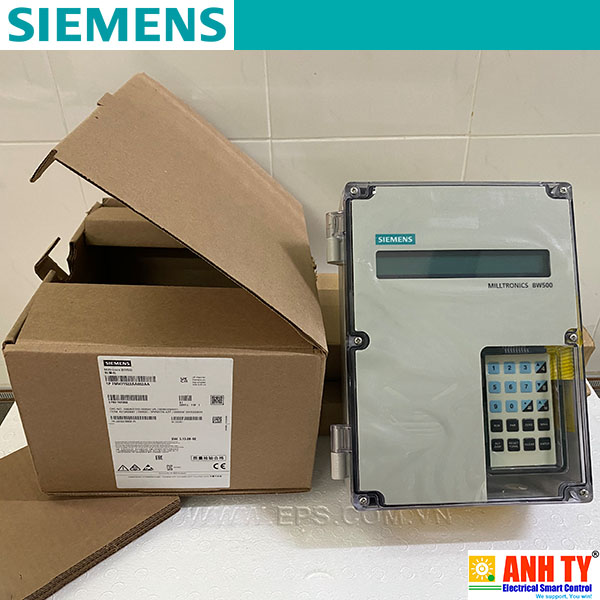 Bộ điều khiển cân Milltronics BW500 BW500/L Integrator Siemens 7MH7152-2AA00-2AAGiá tốt nhất xem...0909186879 Email
Bộ điều khiển cân Milltronics BW500 BW500/L Integrator Siemens 7MH7152-2AA00-2AAGiá tốt nhất xem...0909186879 Email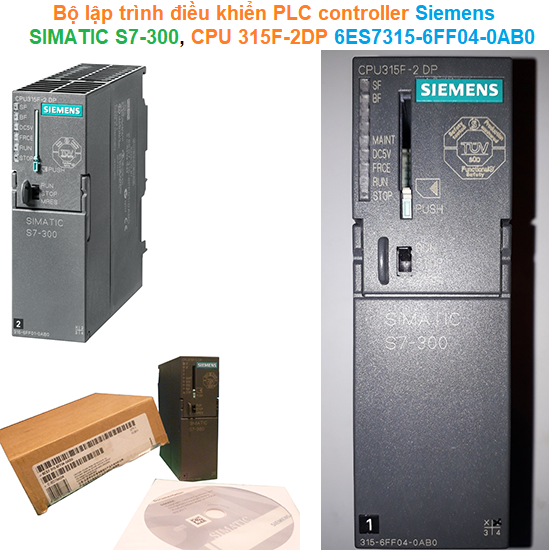 Bộ lập trình điều khiển PLC controller - Siemens - SIMATIC S7-300, CPU 315F-2DPGiá tốt nhất xem...0909186879 Email
Bộ lập trình điều khiển PLC controller - Siemens - SIMATIC S7-300, CPU 315F-2DPGiá tốt nhất xem...0909186879 Email Siemens 6ES7315-6FF04-0AB0 | CPU 315F-2DP -Bộ lập trình PLC SIMATIC S7-300Giá tốt nhất xem...0909186879 Email
Siemens 6ES7315-6FF04-0AB0 | CPU 315F-2DP -Bộ lập trình PLC SIMATIC S7-300Giá tốt nhất xem...0909186879 Email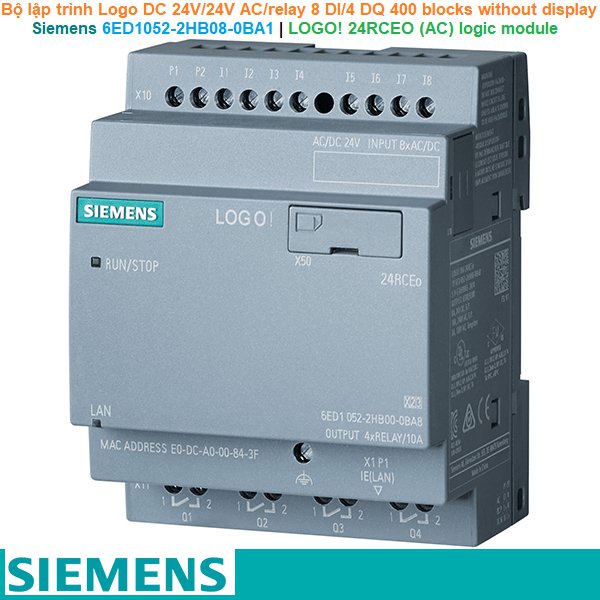 Siemens 6ED1052-2HB08-0BA1 | LOGO! 24RCEO (AC) logic module -Bộ lập trình LogoGiá tốt nhất xem...0909186879 Email
Siemens 6ED1052-2HB08-0BA1 | LOGO! 24RCEO (AC) logic module -Bộ lập trình LogoGiá tốt nhất xem...0909186879 Email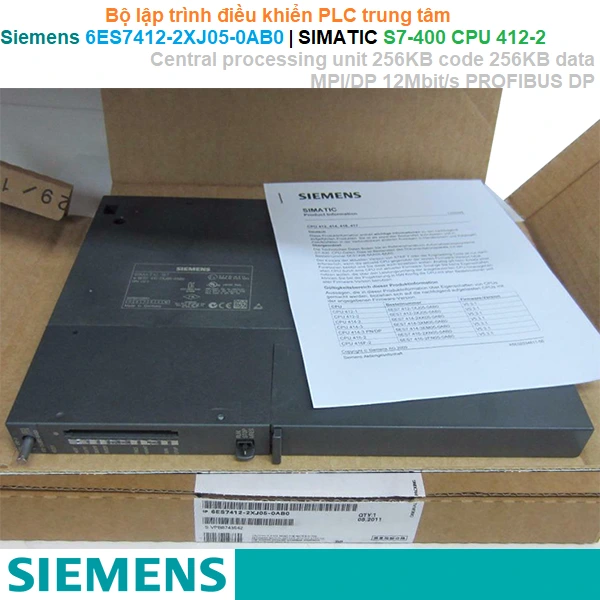 Siemens 6ES7412-2XJ05-0AB0 | SIMATIC S7-400 CPU 412-2 Central processing unitGiá tốt nhất xem...0909186879 Email
Siemens 6ES7412-2XJ05-0AB0 | SIMATIC S7-400 CPU 412-2 Central processing unitGiá tốt nhất xem...0909186879 Email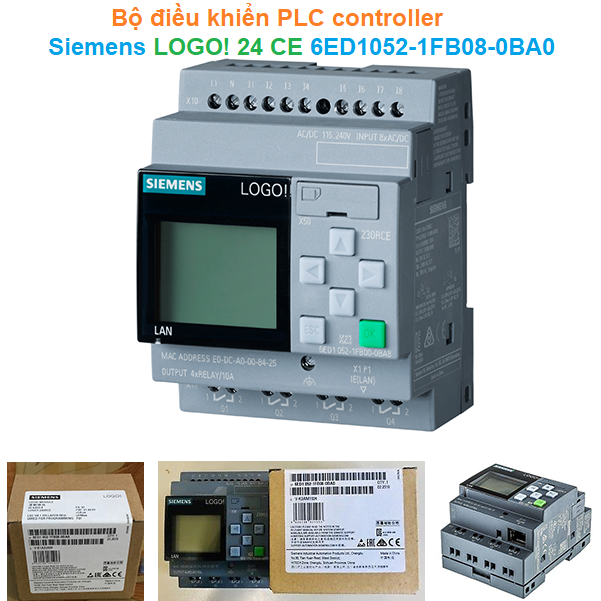 Bộ điều khiển PLC controller - Siemens - LOGO! 230 RCE 6ED1052-1FB08-0BA0Giá tốt nhất Xem...0909186879 Email
Bộ điều khiển PLC controller - Siemens - LOGO! 230 RCE 6ED1052-1FB08-0BA0Giá tốt nhất Xem...0909186879 Email Bộ lập trình điều khiển PLC - Siemens - SIMATIC S7-1200, CPU 1212C 6ES7212-1AE40-0XB0Giá tốt nhất Xem...0909186879 Email
Bộ lập trình điều khiển PLC - Siemens - SIMATIC S7-1200, CPU 1212C 6ES7212-1AE40-0XB0Giá tốt nhất Xem...0909186879 Email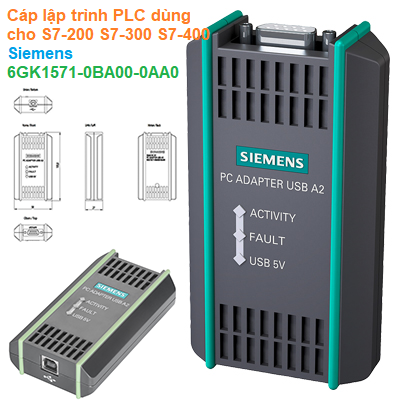 Cáp lập trình PLC dùng cho S7-200 S7-300 S7-400 - Siemens - PC adapter USB A2 - 6GK1571-0BA00-0AA0Giá tốt nhất Xem...0909186879 Email
Cáp lập trình PLC dùng cho S7-200 S7-300 S7-400 - Siemens - PC adapter USB A2 - 6GK1571-0BA00-0AA0Giá tốt nhất Xem...0909186879 Email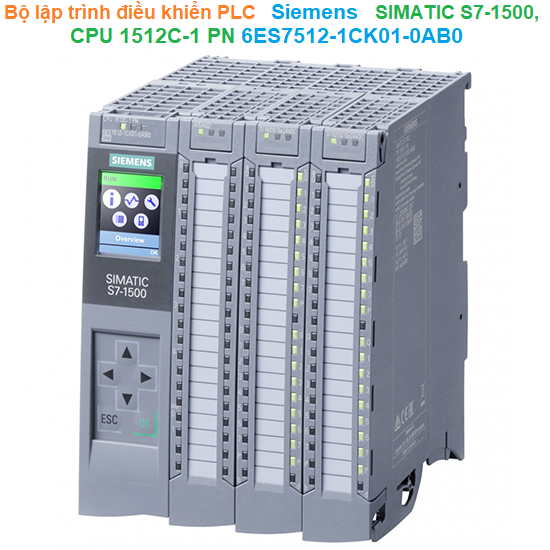 Bộ lập trình điều khiển PLC - Siemens - SIMATIC S7-1500, CPU 1512C-1 PN 6ES7512-1CK01-0AB0Giá tốt nhất Xem...0909186879 Email
Bộ lập trình điều khiển PLC - Siemens - SIMATIC S7-1500, CPU 1512C-1 PN 6ES7512-1CK01-0AB0Giá tốt nhất Xem...0909186879 Email Bộ PLC Siemens 6ES7214-1BG40-0XB0 | S7-1200 CPU 1214CGiá tốt nhất Xem...0909186879 Email
Bộ PLC Siemens 6ES7214-1BG40-0XB0 | S7-1200 CPU 1214CGiá tốt nhất Xem...0909186879 Email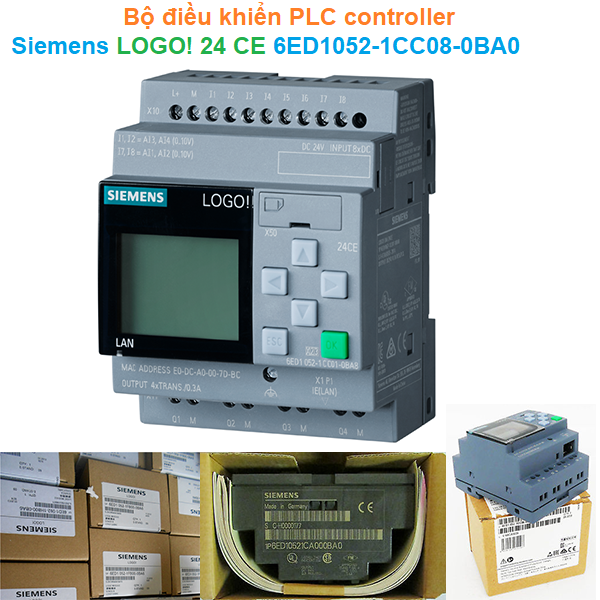 Bộ điều khiển PLC controller - Siemens - LOGO! 24 CE 6ED1052-1CC08-0BA0Giá tốt nhất Xem...0909186879 Email
Bộ điều khiển PLC controller - Siemens - LOGO! 24 CE 6ED1052-1CC08-0BA0Giá tốt nhất Xem...0909186879 Email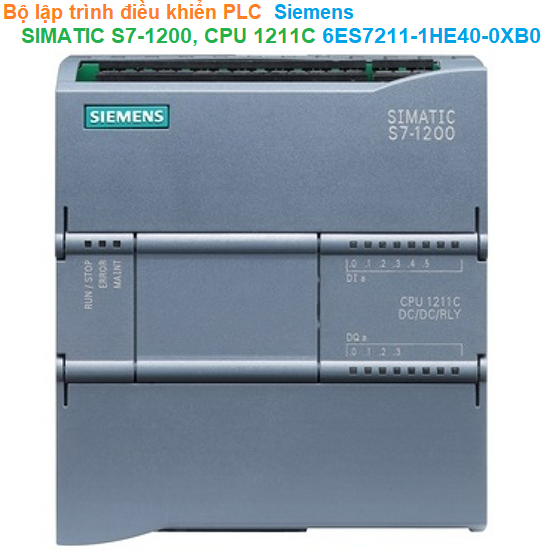 Bộ lập trình điều khiển PLC - Siemens - SIMATIC S7-1200, CPU 1211C 6ES7211-1HE40-0XB0Giá tốt nhất Xem...0909186879 Email
Bộ lập trình điều khiển PLC - Siemens - SIMATIC S7-1200, CPU 1211C 6ES7211-1HE40-0XB0Giá tốt nhất Xem...0909186879 Email Bộ lập trình điều khiển PLC - Siemens - SIMATIC S7-1500, CPU 1511-1 PN 6ES7511-1AK02-0AB0Giá tốt nhất Xem...0909186879 Email
Bộ lập trình điều khiển PLC - Siemens - SIMATIC S7-1500, CPU 1511-1 PN 6ES7511-1AK02-0AB0Giá tốt nhất Xem...0909186879 Email Bộ lập trình điều khiển PLC - Siemens - SIMATIC S7-1500 Compact CPU CPU 1511C-1PN 6ES7511-1CK01-0AB0Giá tốt nhất Xem...0909186879 Email
Bộ lập trình điều khiển PLC - Siemens - SIMATIC S7-1500 Compact CPU CPU 1511C-1PN 6ES7511-1CK01-0AB0Giá tốt nhất Xem...0909186879 Email